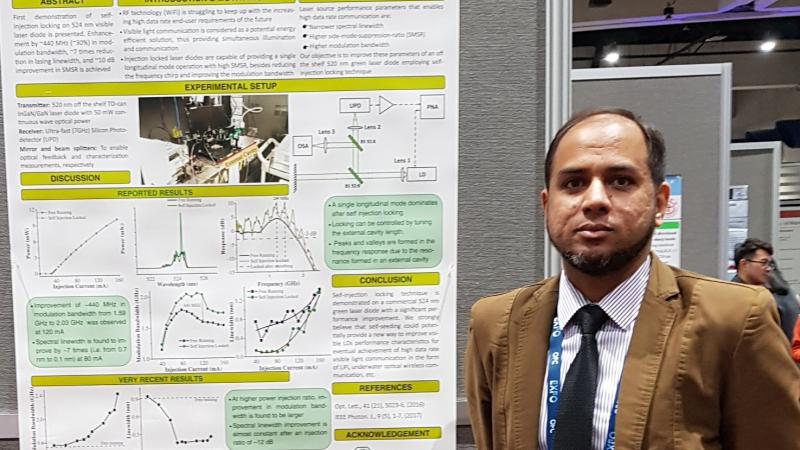Review paper on Self-assembled InAs/InP quantum dots and quantum dashes has been published on the review journal "Progress in Quantum Electronics" by Dr. Mohammed Zahed Mustafa Khan
The advances in lasers, electronic and photonic integrated circuits (EPIC), optical interconnects as well as the modulation techniques allow the present day society to embrace the convenience of broadband, high speed internet and mobile network connectivity. However, the steep increase in energy demand and bandwidth requirement calls for further innovation in ultra-compact EPIC technologies. In the optical domain, advancement in the laser technologies beyond the current quantum well (Qwell) based laser technologies are already taking place and presenting very promising results. Homogeneously grown quantum dot (Qdot) lasers and optical amplifiers, can serve in the future energy saving information and communication technologies (ICT) as the work-horse for transmitting and amplifying information through optical fiber. The encouraging results in the zero-dimensional (0D) structures emitting at 980 nm, in the form of vertical cavity surface emitting laser (VCSEL), are already operational at low threshold current density and capable of 40 Gbps error-free transmission at 108 fJ/bit. Subsequent achievements for lasers and amplifiers operating in the O-, C-, L-, U-bands, and beyond will eventually lay the foundation for green ICT. On the hand, the inhomogeneously grown quasi 0D quantum dash (Qdash) lasers are brilliant solutions for potential broadband connectivity in server farms or access network. A single broadband Qdash laser operating in the stimulated emission mode can replace tens of discrete narrow-band lasers in dense wavelength division multiplexing (DWDM) transmission thereby further saving energy, cost and footprint. We herein reviewed the1 progress of both Qdots and Qdash devices, based on the InAs/InGaAlAs/InP and InAs/InGaAsP/InP material systems, from the angles of growth and device performance. In particular, we discussed the progress in lasers, semiconductor optical amplifiers (SOA), mode locked lasers, and superluminescent diodes, which are the building blocks of EPIC and ICT. Alternatively, these optical sources are potential candidates for other multi-disciplinary field applications.



